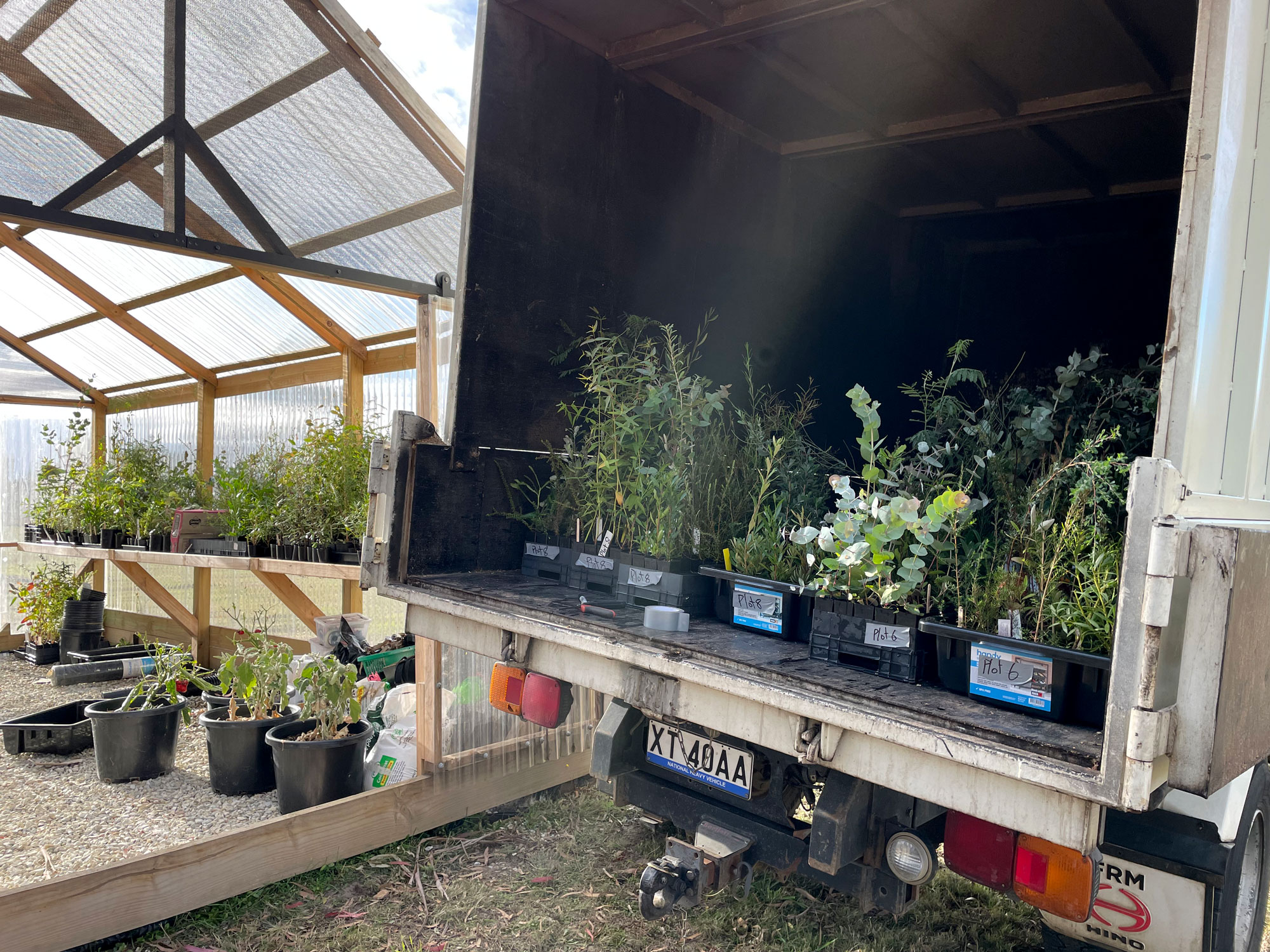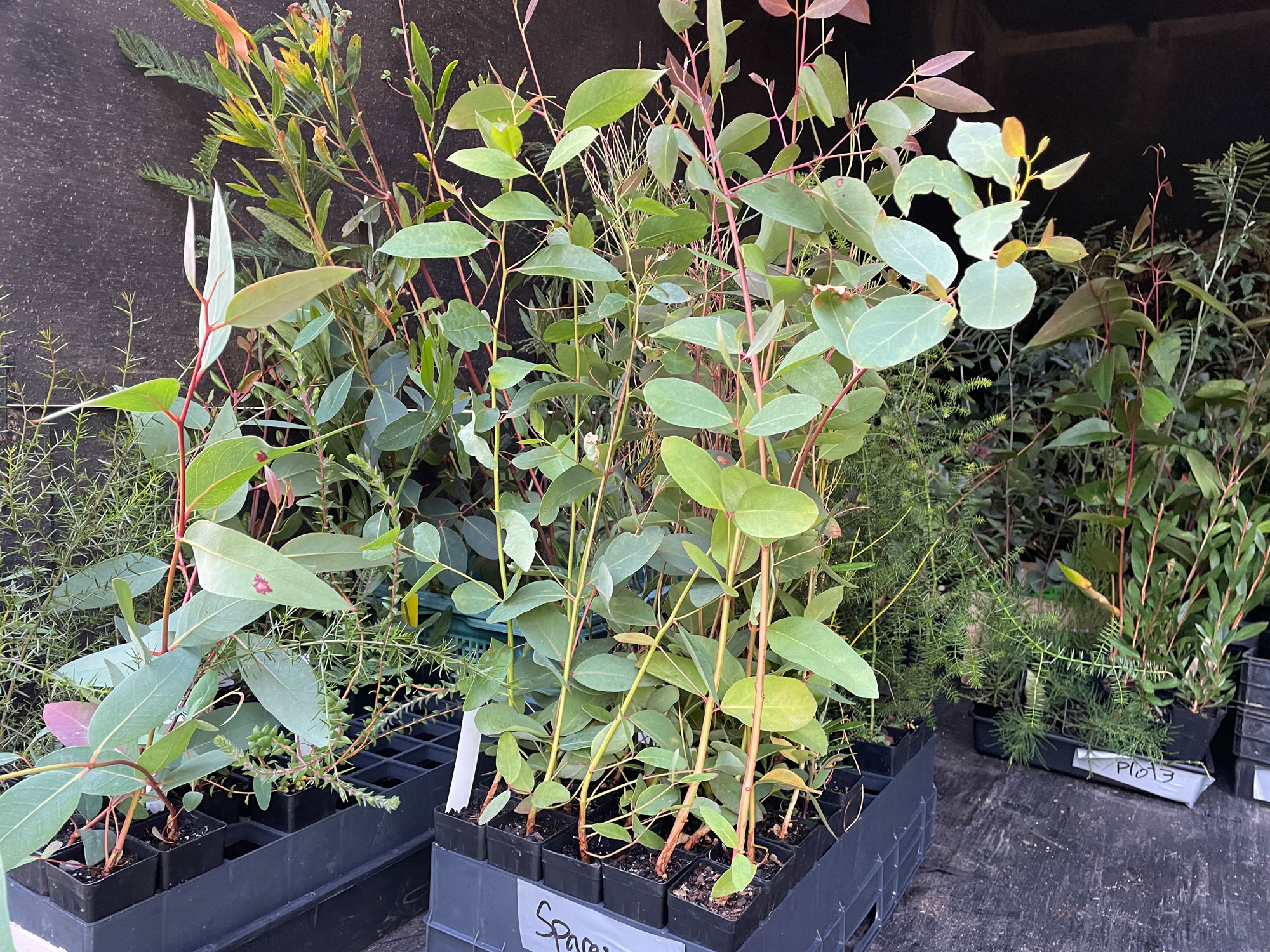Tree selection
It can be challenging to select the most suitable tree for your site conditions. Sometimes the tree you desire is not suitable and will perform poorly. There can be many contributing constraints that are considered to ensure the most appropriate species is selected, so that it will thrive in its new home.
Tree selection constraints
Some trees need specific conditions to ensure that they not only survive but thrive. Some site or tree constraints to consider before choosing a tree:
Location
It is important to know the aspect of the intended planting site, i.e. whether it is in full sun or shade for the most part of a day, whether it is subject to salt spray, frost, etc. The location of the planting site will play a large part in which species is most appropriate. Selecting trees with screening properties can also help shield a property from an surrounding roads, or provide windbreaks in windy conditions. (see fig. 1).
Soil type
Different soils, such as sand or clay, have different water retention properties and particle size (meaning it may be subject to compaction). Some trees won’t tolerate compacted soils and their roots won’t penetrate enough for the tree to become established.
pH preference
Different trees perform better in different soil pH. If a tree is out of its pH tolerance zone it will unlikely be able to access the nutrients that it needs. A simple soil pH test kit bought from your local hardware store or nursery will quickly tell you what your soil’s pH is.
Physical restrictions
Check the expected height and width dimensions of the intended tree at maturity. For example, planting a large tree under overhead services or in an area with shallow soils will not be suitable to the conditions. Also consider existing structures that may inhibit root development or that may be damaged if the new tree has a vigorous or invasive root system.
Watering requirements
Some species of trees are thirstier than others and have a higher watering demand. If your site is not irrigated or you’re not in the position to provide water frequently then its best to consider a more drought tolerant species. Don’t forget that if you’re in the Hobart area that we are the second driest capital city in Australia!
Make a short list
Once you have considered all the constraints of the site it is time to make a short list of potentially suitable species. There is plenty of information online for lots of species, but it is important to make sure you are getting your information from reputable sources. Alternatively, feel free to get in touch with us to help compile a list of suitable species.

Fig 1. An example of plants selected for with the numerical ranking system.
Tree selection time
Now that you have a list of potentially suitable species for your site, its time to score them against the relevant criteria. Give each criteria a numerical ranking (i.e., a score from 1 to 3 where 1 = poor suitability, 2 = moderate suitability, and 3 = good suitability), and assign a score for each potential species against each criterion. The species with the highest score will be the best suited to your site. But put the shovel down, the decision may not be over yet!
You may end up with more than one species with the same high score. If this is the case then you can add modifiers to your ranking, like aesthetics (foliage, flower, and bark colour) or whether the tree is deciduous or evergreen. If they still score the same and you can’t decide then plant multiple species (the world needs more trees)! Fig. 1 depicts a number of plants selected using the numerical ranking system.
Planting
With a clear plan for moving forward, now you’re ready to pick up the shovel. If you’re unsure on the best planting techniques, or require assistance with your planting project, Tasmanian Arboriculture Consultants can answer any questions you may have regarding tree selection.

Blog written by Mark Fahy
Mark has a diploma in arboriculture (AQF level 5) and is a registered Quantitative Tree Risk (QTRA) assessor. He has been an arborist for over 10 years and is passionate about trees. He is committed to providing evidence-based solutions and thorough reports to clients. Mark is specifically enthusiastic about living with trees in the ever-changing urban environment.

